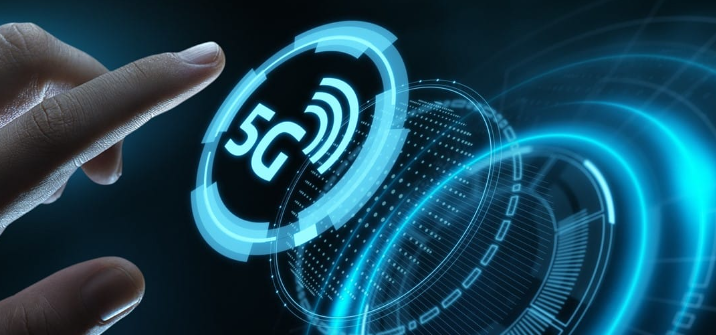5G Technology
5G technology is the fifth generation of mobile networks, succeeding 4G, 3G, and 2G networks. It is designed to provide faster data speeds, lower latency, and increased connectivity, enabling a wide range of new applications and services. 5G networks are expected to revolutionize various industries, including healthcare, transportation, manufacturing, and entertainment.
Key Features of 5G
- High Data Speeds: 5G networks offer peak data rates of up to 20 Gbps, which is significantly higher than the 1 Gbps peak rate of 4G networks. This enables faster downloads, smoother streaming, and improved user experiences.
- Low Latency: 5G technology reduces the latency (the time taken for data to travel between two points) to less than 1 millisecond, compared to 20-30 milliseconds in 4G networks. This is crucial for applications that require real-time responses, such as remote surgery, autonomous vehicles, and virtual reality.
- Massive Connectivity: 5G networks can support up to 1 million devices per square kilometer, enabling the deployment of large-scale Internet of Things (IoT) networks and smart city applications.
- Enhanced Spectrum Efficiency: 5G technology utilizes advanced spectrum sharing techniques, such as Dynamic Spectrum Sharing (DSS), to improve spectrum efficiency and enable the coexistence of 5G and 4G networks in the same frequency bands.
- Network Slicing: 5G networks support network slicing, which allows the creation of multiple virtual networks on top of a shared physical infrastructure. This enables the customization of network resources for specific applications and user groups, ensuring optimal performance and security.
5G Architecture
The 5G network architecture consists of several key components:
- Radio Access Network (RAN): The RAN is responsible for the wireless connection between user devices and the 5G network. It includes base stations (gNodeB) and advanced antenna systems, such as Massive MIMO (Multiple-Input, Multiple-Output), which improve network capacity and coverage.
- Core Network: The 5G core network is based on a Service-Based Architecture (SBA), which enables the flexible and scalable deployment of network functions. It includes components such as the Access and Mobility Management Function (AMF), Session Management Function (SMF), and User Plane Function (UPF).
- Edge Computing: 5G networks leverage edge computing to bring processing power closer to the user, reducing latency and enabling new applications such as augmented reality and industrial automation.
- Network Function Virtualization (NFV) and Software-Defined Networking (SDN): NFV and SDN technologies enable the virtualization and automation of network functions, making 5G networks more agile, scalable, and cost-effective.
5G Use Cases
5G technology enables a wide range of use cases across various industries:
- Enhanced Mobile Broadband (eMBB): 5G provides faster data speeds and improved user experiences for applications such as video streaming, online gaming, and virtual reality.
- Ultra-Reliable Low-Latency Communications (URLLC): 5G’s low latency and high reliability make it suitable for mission-critical applications, such as remote surgery, autonomous vehicles, and industrial automation.
- Massive Machine-Type Communications (mMTC): 5G supports the deployment of large-scale IoT networks, enabling applications such as smart cities, smart agriculture, and asset tracking.
- Fixed Wireless Access (FWA): 5G FWA provides high-speed internet access to homes and businesses, serving as an alternative to traditional wired broadband.
5G Deployment in India
India is actively working towards the deployment of 5G networks, with the government and telecom operators taking several initiatives to accelerate the rollout:
- 5G Spectrum Auction: In March 2021, the Indian government conducted a 5G spectrum auction, allocating frequencies in the 700 MHz, 3.3-3.6 GHz, and 26 GHz bands to telecom operators for 5G services.
- 5G Trials: Telecom operators, in collaboration with equipment vendors, have conducted 5G trials in various cities across India, testing the technology’s performance and use cases.
- 5G Test Beds: The Indian government has established 5G test beds in academic institutions and research centers to promote indigenous 5G technology development and foster collaboration between industry and academia.
- 5G Use Case Labs: The Department of Telecommunications (DoT) has set up 5G use case labs in collaboration with industry partners to develop and showcase 5G applications in sectors such as agriculture, healthcare, and education.
Challenges and Concerns
While 5G technology offers numerous benefits, there are also challenges and concerns that need to be addressed:
- Infrastructure Deployment: The deployment of 5G networks requires significant investments in infrastructure, including the installation of dense networks of small cells and fiber backhaul.
- Spectrum Availability: The availability of contiguous and harmonized spectrum bands is crucial for the optimal performance of 5G networks. Spectrum fragmentation and high spectrum prices can hinder the rollout of 5G services.
- Security and Privacy: 5G networks, with their increased connectivity and virtualized architecture, present new security challenges. Ensuring the security and privacy of user data and protecting networks from cyber threats is critical.
- Health Concerns: There have been concerns raised about the potential health effects of 5G radio waves. However, scientific studies have not found any conclusive evidence of adverse health impacts from 5G networks operating within the established safety guidelines.


